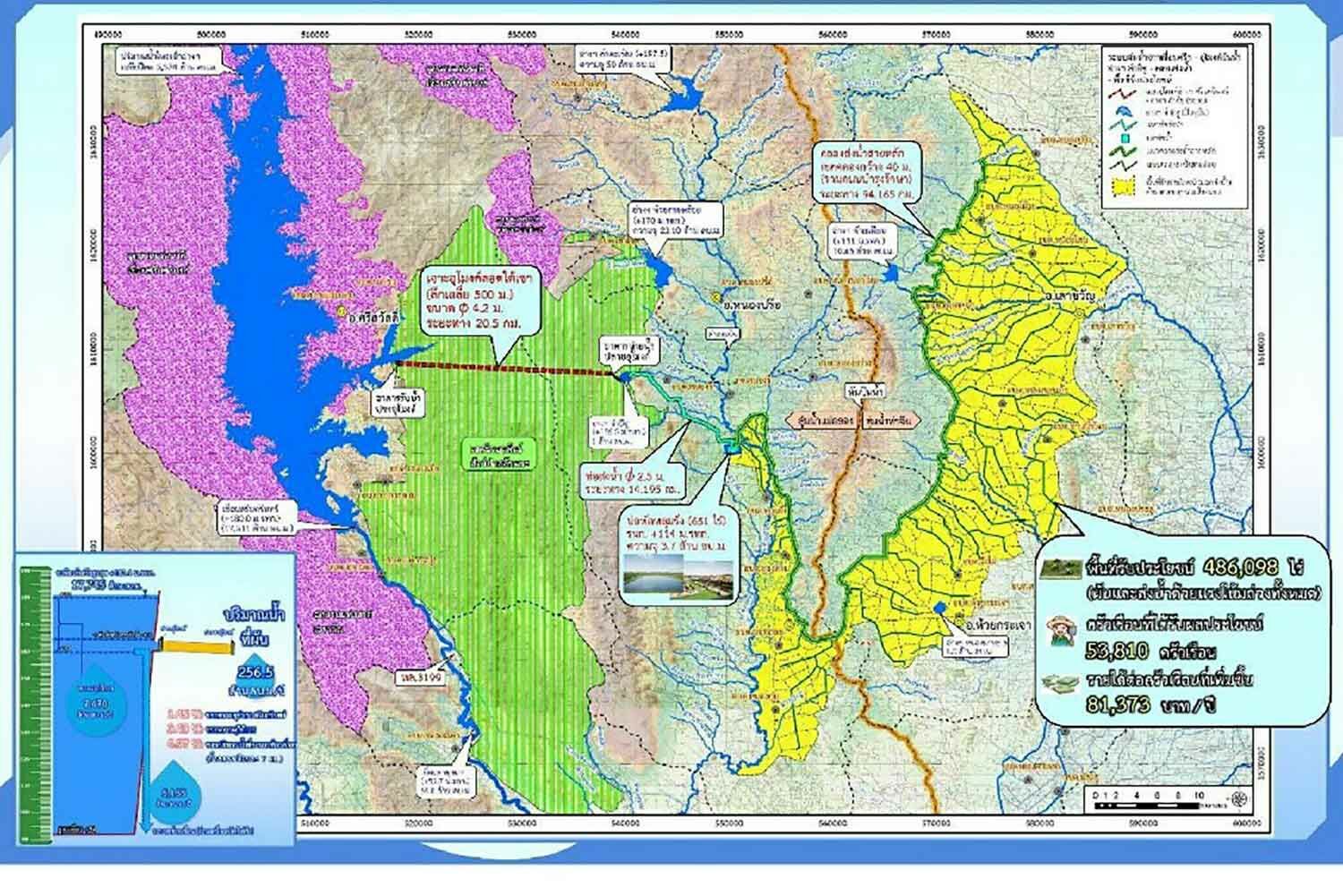Kanchanaburi to benefit from 12 billion baht water diversion project

Kanchanaburi’s five districts are set to benefit from a water diversion tunnel project that aims to alleviate drought problems. The project, which is valued at 12 billion baht (US$335,746,080), seeks to transfer 378 million cubic metres of water from the Srinagarind Dam, the largest dam in the western region, to an area of 200,000 rai in the Huay Krachao, Lao Khwan, Bo Phloi, Nong Prue and Phanom Thuan districts of Kanchanaburi.
The Office of the National Water Resources (ONWR) completed the feasibility study of the project across five districts in April 2021, according to the project’s advisory team representative, Chaitas Imsamranrat. The tunnel, with its length of 20.5 kilometres and width of 4.2 metres, is planned to be executed in four stages.
The first phase involves directing water beneath a mountain at an average depth of 500 metres to the Lam E Su reservoir at a rate of 1.03 million cubic metres per day. This phase, which also includes the construction of water-receiving and discharging buildings, is expected to cost 4.28 billion baht (US$ 119,749,435).
Following this, a new water transportation system will be installed to channel water to a clarifier site, a project that requires a budget of 3.12 billion baht (US$87,293,980). The next stage involves building a Lumrang clarifier site, which is estimated to cost 3 billion baht (US$83,936,520).
Finally, a further water transport system will be constructed to release water into a primary concrete canal and its 42 sub-routes for public use. The budget for this stage is 3.99 billion baht (US$111,635,571).
Despite the project’s potential benefits, concerns have been raised regarding its environmental impact, particularly the first phase, which is located in the Salakpra Wildlife Sanctuary.
Tunnel project
However, Chaitas has provided assurances of the project’s environmental safety, highlighting that the project’s excavation process will utilise a tunnel boring machine (TBM). The TBM is deemed the most efficient method for long tunnels, offering higher productivity and a safer work environment. It is designed to excavate the entrance and the end of the tunnel simultaneously, each side stretching approximately 10 kilometres, thereby minimising noise pollution and other adverse impacts.
The drilling and blasting process will be implemented around the tunnel entrance to prepare for the TBM on the main tunnel. Each blast can create a space of four to six metres per day, and it may take about three months to reach 50 metres.
The project also has the support of Sakda Wichiansilp, Pheu Thai MP for Kanchanaburi and chairman of a House committee studying drought solutions to the El Niño weather phenomenon. He has called on government agencies to expedite the construction process and increase awareness of the project’s importance in mitigating drought issues among locals.
Latest Thailand News
Follow The Thaiger on Google News:


























